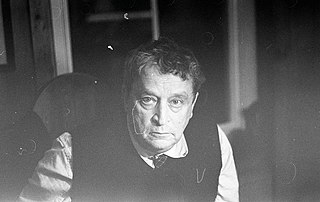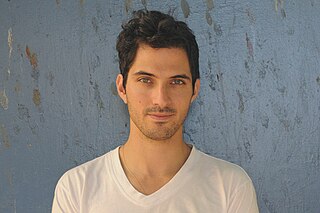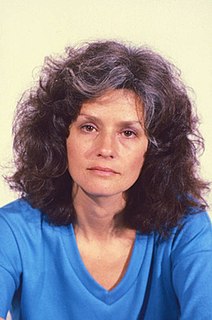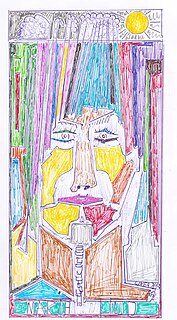Related Research Articles

A curator is a manager or overseer. When working with cultural organizations, a curator is typically a "collections curator" or an "exhibitions curator", and has multifaceted tasks dependent on the particular institution and its mission. In recent years the role of curator has evolved alongside the changing role of museums, and the term "curator" may designate the head of any given division. More recently, new kinds of curators have started to emerge: "community curators", "literary curators", "digital curators" and "biocurators".

Harald Szeemann was a Swiss curator, artist, and art historian. Having curated more than 200 exhibitions, many of which have been characterized as groundbreaking, Szeemann is said to have helped redefine the role of an art curator. It is believed that Szeemann elevated curating to a legitimate art-form itself.

Sir Norman Rosenthal is a British independent curator and art historian. From 1970 to 1974 he was Exhibitions Officer at Brighton Museum and Art Gallery. In 1974 he became a curator at the Institute of Contemporary Arts, London, leaving in 1976. The following year, in 1977, he joined the Royal Academy in London as Exhibitions Secretary where he remained until his resignation in 2008. Rosenthal has been a trustee of numerous different national and international cultural organisations since the 1980s; he is currently on the board of English National Ballet. In 2007, he was awarded a knighthood in the Queen's Birthday Honours List. Rosenthal is well known for his support of contemporary art, and is particularly associated with the German artists Joseph Beuys, Georg Baselitz, Anselm Kiefer and Julian Schnabel, the Italian painter Francesco Clemente, and the generation of British artists that came to prominence in the early 1990s known as the YBAs.
Lowery Stokes Sims is an American art historian and curator of modern and contemporary art known for her expertise in the work of African, African American, Latinx, Native and Asian American artists such as Wifredo Lam, Fritz Scholder, Romare Bearden, Joyce J. Scott and others. She served on the curatorial staff of the Metropolitan Museum of Art, the Studio Museum in Harlem, and the Museum of Arts and Design. She has frequently served as a guest curator, lectured internationally and published extensively, and has received many public appointments. Sims was featured in the 2010 documentary film !Women Art Revolution.

Willoughby Sharp was an American artist, independent curator, independent publisher, gallerist, teacher, author, and telecom activist. Avalanche published interviews they conducted with contemporary artists such as Vito Acconci, Dennis Oppenheim and Yvonne Rainer. Sharp also was contributing editor to four other publications: Impulse (1979–1981); Video magazine (1980–1982); Art Com (1984–1985), and the East Village Eye (1984–1986). He published three monographs on contemporary artists, contributed to many exhibition catalogues, and wrote on art for Artforum, Art in America, Arts magazine, Laica Journal, Quadrum and Rhobo. He was editor of the Public Arts International/Free Speech documentary booklet in 1979. Sharp received numerous grants, awards, and fellowships; both as an individual or under the sponsorship of non-profit arts organizations.

Joshua Simon, is a curator, writer, publisher, cultural critic, poet, filmmaker and public intellectual. He currently lives in Philadelphia, PA.

Arlene Raven was a feminist art historian, author, critic, educator, and curator. Raven was a co-founder of numerous feminist art organizations in Los Angeles in the 1970s.

The Brooklyn Rail is a publication and platform for the arts, culture, humanities, and politics. The Rail is based out of Brooklyn, New York. It features in-depth critical essays, fiction, poetry, as well as interviews with artists, critics, and curators, and reviews of art, music, dance, film, books, and theater.
Ingrid Schaffner is a curator, writer, and educator specializing in contemporary art since the mid-1980s. Schaffner work often coalesces around themes of archiving and collecting, photography, feminism, and alternate modernisms—especially Surrealism. She has curated important exhibitions that have helped studio craft to gain acceptance as fine arts, such as Dirt on Delight: Impulses That Form Clay with Jenelle Porter at the Institute of Contemporary Art, Philadelphia in 2009.
Christiane Paul is chief curator/director of the Sheila C. Johnson Design Center at Parsons School of Design and an associate professor in the School of Media Studies at The New School, and Adjunct Curator of New Media Arts at the Whitney Museum of American Art in New York City. She is widely known as the author of the book Digital Art, part of the 'World of Art' series published by Thames & Hudson.
The Vera List Center for Art and Politics is an American nonprofit research organization and public forum for art, culture, and politics, established in 1992. Vera List was an American art collector and philanthropist.
Nancy Spector is an American museum curator who has held positions at the Solomon R. Guggenheim Museum in New York City and the Brooklyn Museum.

Catherine de Zegher is a Belgian curator and a modern and contemporary art historian. She has a degree in art history and archaeology from the University of Ghent.
Ann Temkin is an American art curator, and currently the Marie-Josée and Henry Kravis Chief Curator of Painting and Sculpture at the Museum of Modern Art in New York.

Koyo Kouoh is Cameroonian-born curator who has been serving as Executive Director and Chief Curator of the Zeitz Museum of Contemporary Art Africa in Cape Town since 2019. In 2015, the New York Times called her "one of Africa’s pre-eminent art curators and managers." She lives and works in Cape Town and Dakar.
Kathy Halbreich is an American art curator and museum director.
Anne Barlow is a curator and director in the field of international contemporary art, and is currently Director of Tate St Ives, Art Fund Museum of the Year 2018. There she directs and oversees the artistic vision and programme, including temporary exhibitions, collection displays, artist residencies, new commissions, and a learning and research programme. At Tate St Ives, Barlow has curated solo exhibitions of work by artists including Thảo Nguyên Phan (2022), Petrit Halilaj (2021), Haegue Yang (2020), Otobong Nkanga (2019), Huguette Caland (2019), Amie Siegel (2018) and Rana Begum (2018). She was also co-curator of "Naum Gabo: Constructions for Real Life" (2020) and collaborating curator with Castello di Rivoli, Turin for Anna Boghiguian at Tate St Ives (2019).
Prem Krishnamurthy is a designer, curator, teacher, and writer based in Berlin and New York City. He is a partner in the multidisciplinary design studio Wkshps. In 2015, Krishnamurthy was awarded Cooper Hewitt’s National Design Award for Communication Design.
Justine Ludwig is a director, curator, and writer. She is the Executive Director of Creative Time. Her research interests include the intersections of aesthetics and architecture, violence, economics, and globalization.

Maria Lind is a Swedish curator, art writer and educator. Since 2020, she has been the Counsellor of Cultural Affairs at the Embassy of Sweden in Moscow.
References
- ↑ jvolpe (2018-07-13). "Carin Kuoni". The Pew Center for Arts & Heritage. Retrieved 2020-09-17.
- 1 2 "Carin Kuoni, Author at The Creative Time Summit". creativetime.org. Retrieved 2020-09-17.
- 1 2 3 4 5 6 "The Vera List Center Staff". The Vera List Center. Retrieved 2020-09-17.
- ↑ "The New School" . Retrieved 22 September 2020.
- ↑ "Ceremony for Ms. Kuoni and Mr. Oakes". The New York Times. Retrieved 22 September 2020.
- ↑ Klein, Jennie (2002). "Curates and Curators". PAJ: A Journal of Performance and Art. 24 (3): 105–109. doi:10.1162/15202810260186738. JSTOR 3246356. S2CID 57565401 . Retrieved 22 September 2020.
- ↑ "The Vera List Center OURS: Democracy in the Age of Branding". The Vera List Center. Retrieved 2020-09-17.
- ↑ "New School Students Propagate Ballast Seeds for Vera List Center Exhibition Exploring Human Migration". Plus Media Solutions. Retrieved 22 September 2020.
- ↑ "REPOhistory – Gregory Sholette Artist/Writer/Activist NYC" . Retrieved 2020-09-20.